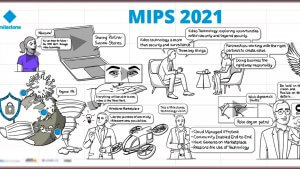
The key to successful projects
Process facilitation is about leading a team or group through a structured process so they achieve their goals effectively.
A skilled facilitator creates the framework and manages the interaction so the participants can focus on the content and cooperate optimally.
At Levende Streg, we specialize in helping companies navigate through their processes in a structured and engaging way.
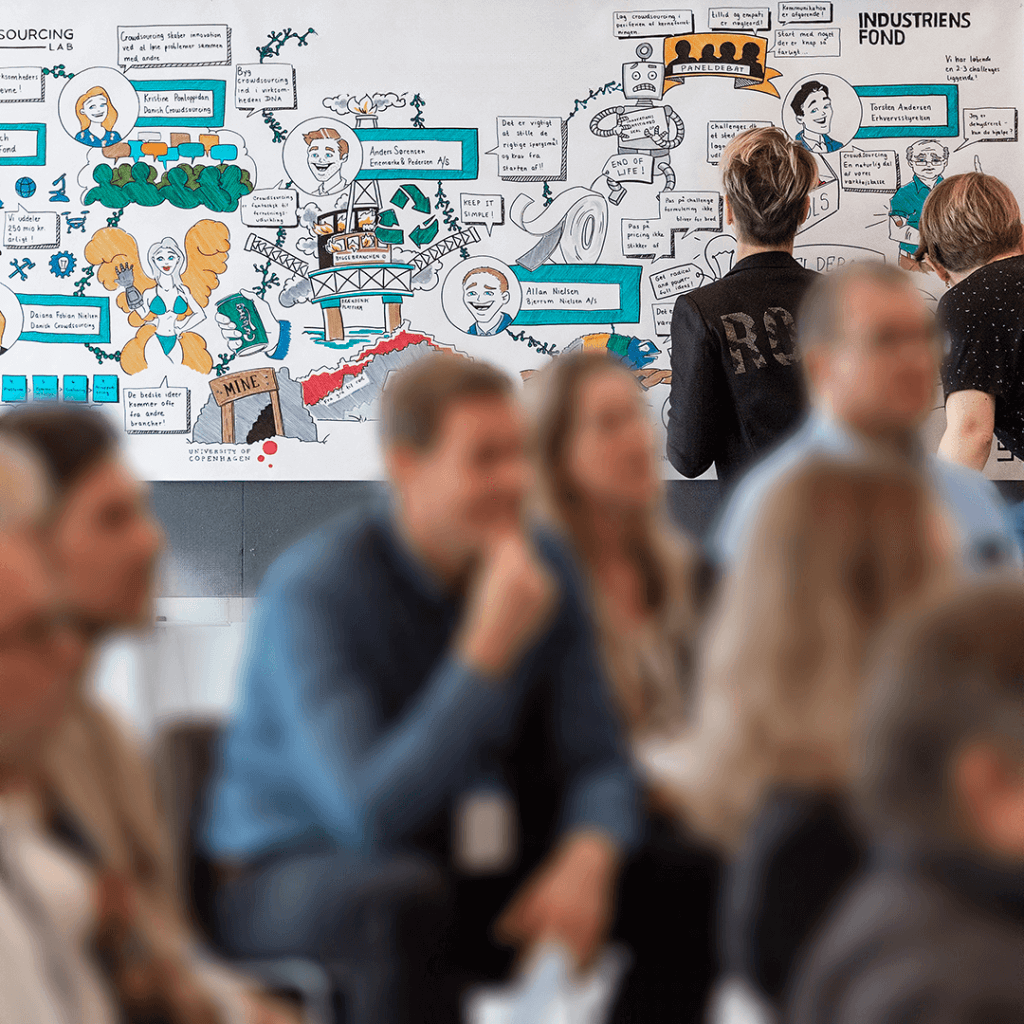
Visualize your process
Visualizing your process from the start creates clarity and commitment.
When faced with communicating complex processes, visual tools and simple graphics can be essential. By using illustrations and metaphors, you can make complicated topics easier to understand and create a common understanding among the participants.
Levende Streg are experts in process facilitation for companies.
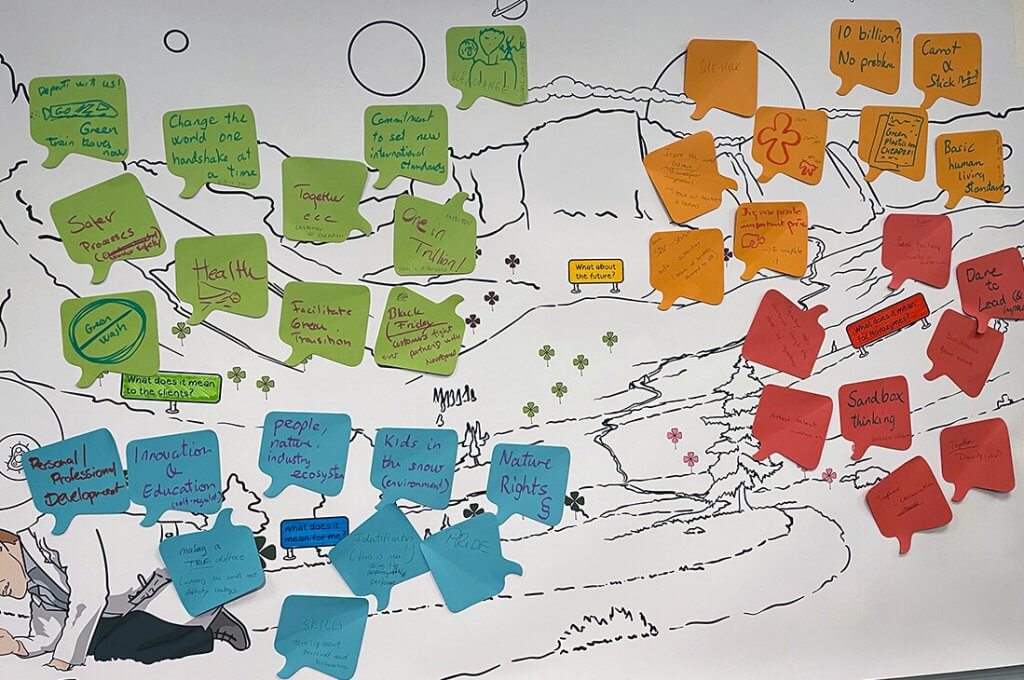
Effective management is not only about steering a company in the right direction, but also about ensuring that all employees are engaged and working towards common goals.
Process facilitation is a powerful tool that helps leaders navigate complex challenges, create clarity and ensure that strategic initiatives turn into concrete actions.It gives managers the necessary tools to structure meetings, workshops and strategy sessions in a way that promotes participation and ownership among employees.
By using visual techniques and templates, managers can make complex ideas more understandable and actionable. This helps create a common understanding.
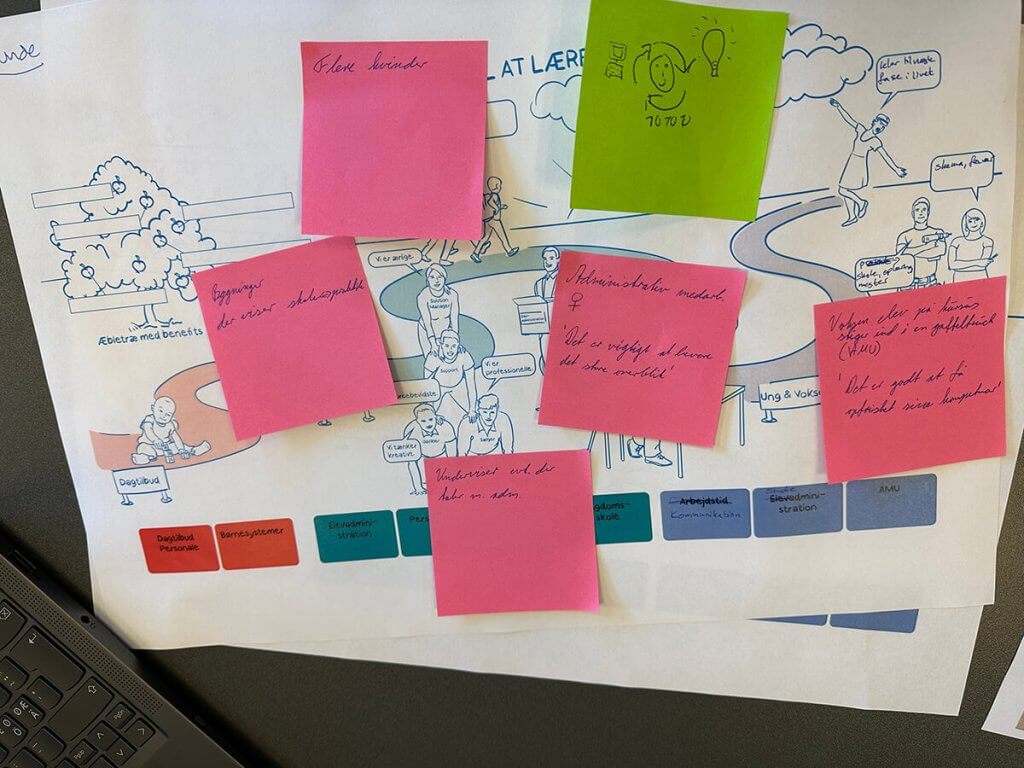
Managers can use process facilitation in many different contexts, such as strategic planning, project management, change management and developing corporate culture. By integrating visual templates and techniques, they can create a more dynamic and engaging work process that not only increases efficiency, but also employee satisfaction.
It creates clarity and commitment to visualize your process from the start. A clear visual or graphical representation helps your team see the entire process and understand their roles and responsibilities.
Process facilitation is an organized and structured method of guiding and supporting a group of people (your team) through various activities or processes to achieve specific goals.
It usually involves the use of a facilitator or process manager who is responsible for creating and maintaining positive and effective group dynamics.

Process illustrations are powerful tools for creating understanding and engagement. By using images and graphics, you can make complex processes or strategies more accessible and easy to follow.
Dedicated: Our cartoonists support your moderator, event manager or facilitator. But we can also facilitate if you wish. We co-create with your specialists. In this way, all perspectives become visible.

Mapping: Start by mapping all the touchpoints where the customer interacts with the company, both online and offline.
Phases: The customer journey is divided into phases, such as attention, consideration, purchase, delivery, and post-purchase. For each stage, we identify the customer’s goals, actions, emotions and the touchpoints they interact with.
We can e.g. use diagrams and flowcharts to visualize the customer journey.
It can help identify bottlenecks, pain points and opportunities for improvement. Visual tools such as customer journey maps make it easier to communicate and understand the customer’s experience.
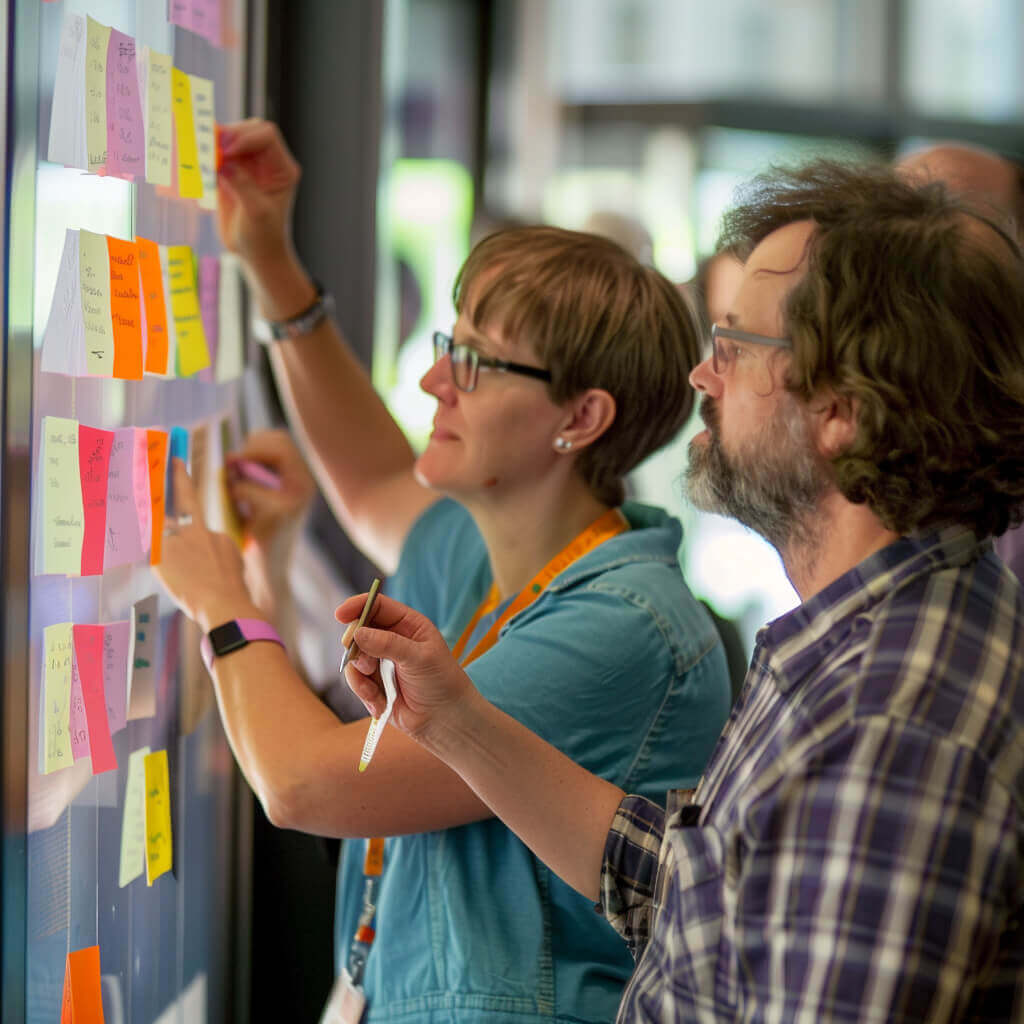
Boost your efficiency with a course in process facilitation!
At Levende Streg, we offer courses in process facilitation, designed to equip managers, project managers and team members with the necessary tools and techniques to lead effective meetings and workshops.
Our courses are tailored to your team’s needs and focus on practical skills and applicable methods that can be implemented directly into your daily workflow.
Through a combination of theory and hands-on exercises, you learn how to structure processes, promote participation, and use visual tools to make complex ideas more accessible and actionable.
Participants gain insight into how to create commitment and ownership among team members, improve decision-making, and ensure effective implementation of strategies and plans.
Managers can use process facilitation in many different contexts, such as strategic planning, project management, change management and developing corporate culture.
By integrating visual templates and techniques, they can create a more dynamic and engaging work process that not only increases efficiency, but also employee satisfaction.
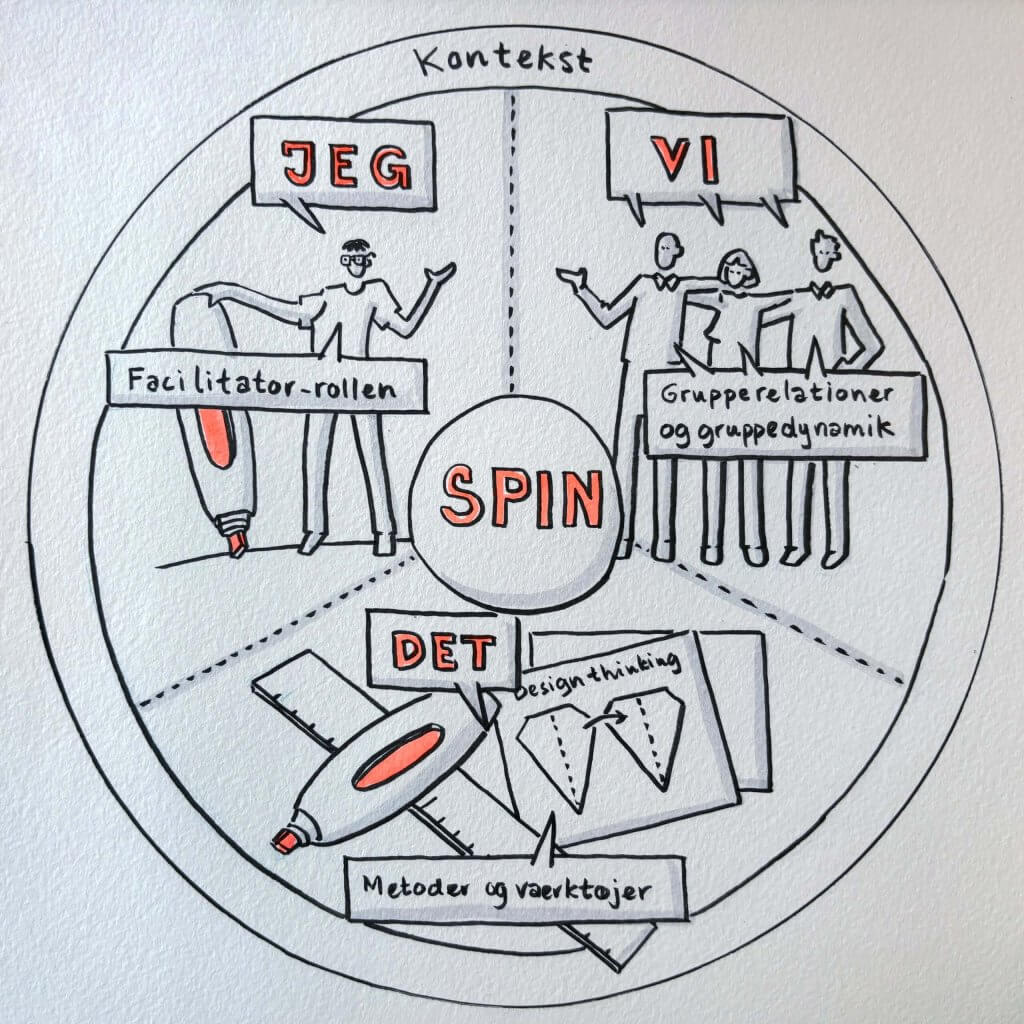
Dit facilitatorhjul: Balance mellem JEG, VI og DET
Facilitatorhjulet består af tre grundlæggende elementer: JEG, VI og DET. Opgaven som procesfacilitator er at skabe balance mellem disse elementer.
For at opnå effektiv facilitering og procesledelse skal du kontinuerligt justere og balancere disse tre aspekter i forhold til konteksten og det konkrete mål.
Når du formår at skabe denne balance, vil facilitatorhjulet dreje ubesværet, hvilket danner grundlaget for en vellykket facilitering.
A linear process is a sequential approach where each step leads to the next. It makes it easy to plan and track progress as each phase is clearly defined and follows a logical sequence.Visualizing a linear process can help identify milestones and stay focused on the goal.
This type of process is ideal for projects with clearly defined goals and fixed steps, such as product development, project management and implementation of new systems.By using a linear approach, you can ensure that all team members are aware of their responsibilities and the specific steps that need to be taken to achieve the end goal.
Advantages of a linear process

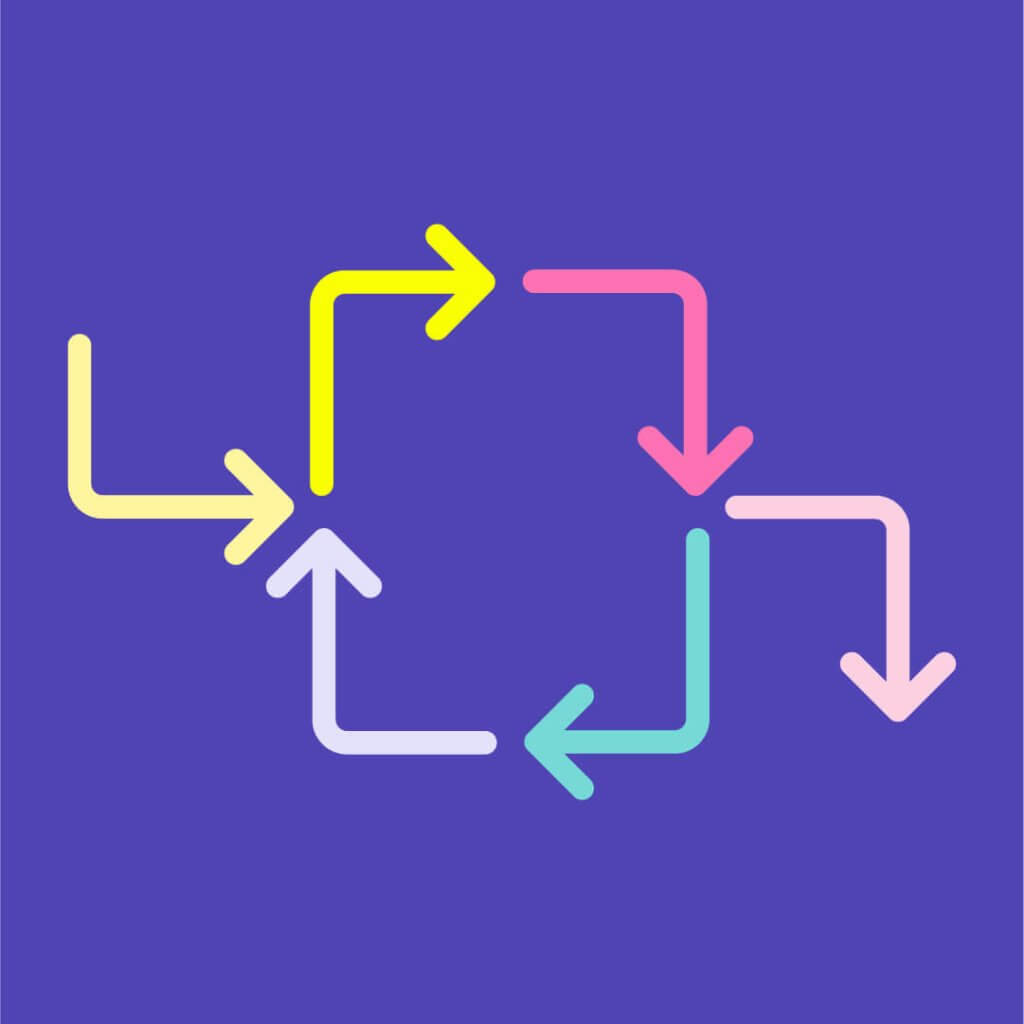
A circular process is more dynamic and often involves repetition and feedback loops.It is important to visualize the elements of the process so that everyone can see how they contribute to the overall goal.
This type of process is ideal for projects that require continuous adaptation and adjustment, such as quality improvement initiatives, agile development projects, and strategic planning processes.
By using a circular approach, you can ensure that feedback is continuously integrated, leading to constant improvement and adaptation.
Advantages of a circular iterative process
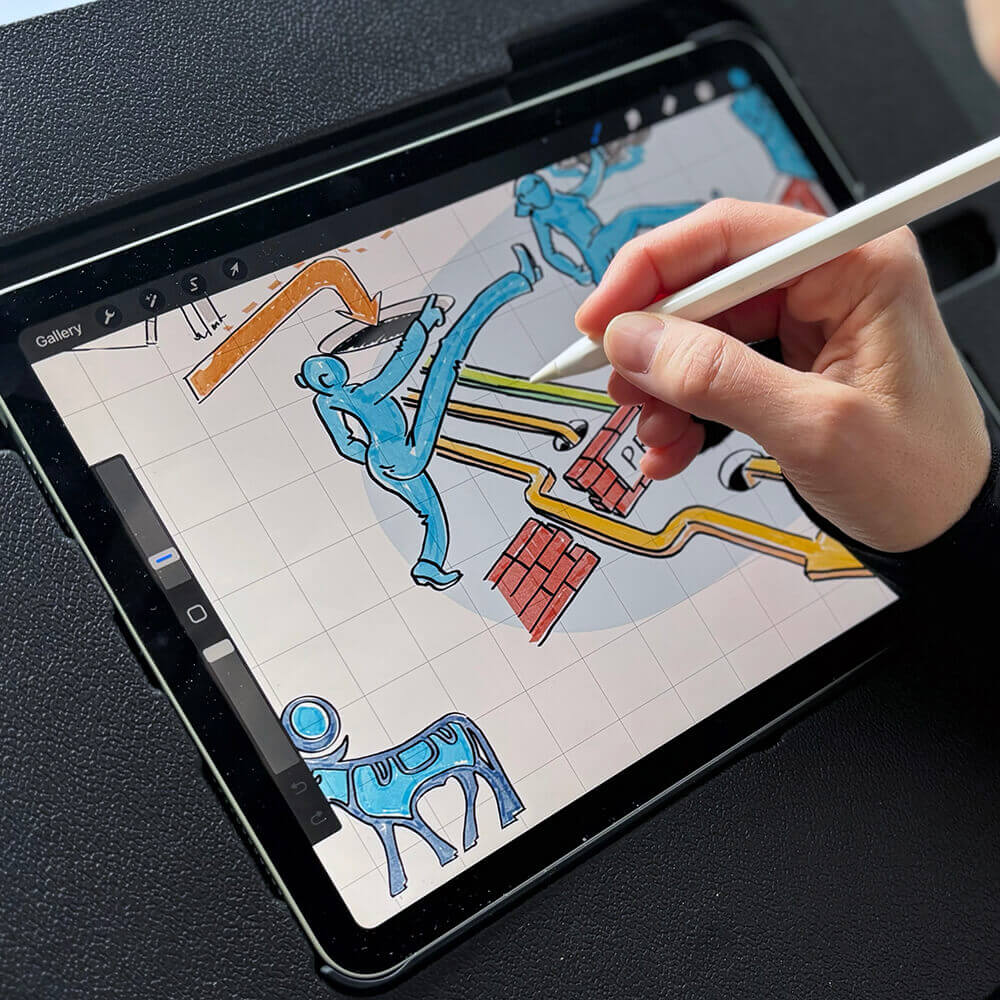
New studies show that participants who read only text remember 10 percent of what they read after three days. Those who see text paired with images remember 65 percent of the information three days later.
Studies have shown that a group that doodled during a test remembered 29 percent more information than those who didn’t. How much better it is if the pictures relate to what you are reading about.
More and more companies make use of the facilitation of their processor – because it creates better communication.

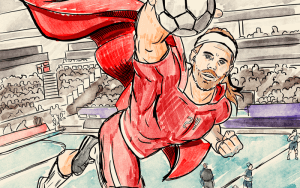

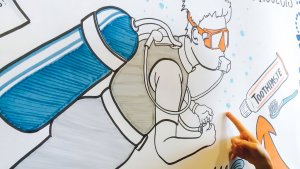
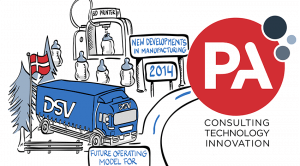
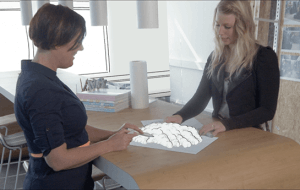


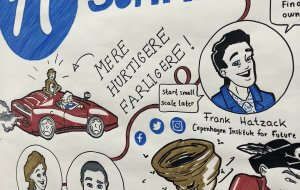
A change process can be challenging, but by visualizing each step, you can make it easier for the team to understand and engage.
Create clear drawings, images or graphics that show the way through the change, and use metaphors to make the process more concrete.
Re-contextualization
Re-contextualisation, or shifting the context, is a powerful strategy in innovation and creative thinking.
It allows us to see old problems with new eyes and find unexpected solutions by breaking out of traditional thought patterns.
De-familiarisation
De-familiarisation is about presenting familiar objects, ideas or experiences in a new and often unexpected way, so that they are perceived as fresh and unfamiliar.
This can challenge our habitual perceptions and create a deeper understanding or new insight.
Juxtaposition
Juxtaposition involves placing two or more ideas or concepts next to each other to highlight contrasts or similarities.
By juxtaposing elements that are not normally connected, contrasts, surprising connections, and new perspectives and insights are created.
Levende Streg can help you tell your company’s stories and get your messages across to your reciever.
We are specialists in familiarizing ourselves with your core area and getting it translated into an easy-to-understand and interesting universe of drawings and animation.
Our process facilitations are used both internally and externally.
Process facilitation is about leading a group through a structured process to achieve their goals effectively. A facilitator creates the framework and controls the interaction so that the participants can focus on the content and cooperate optimally.
Process facilitation is important because it helps structure complex discussions, create engagement and ensure that everyone actively participates. This leads to better decision making, more efficient meetings and increased collaboration.
Yes, Levende Streg has workshops in process facilitation - tailormade for your company. Give us a call and let us help you.
At the same time, we do process facilitation for companies.
You can learn process facilitation by taking a process facilitation course, reading books and manuals on the subject, and practicing through practical exercises and workshops. Levende Streg offers courses and resources to help you get started.
Some good process facilitation exercises include brainstorming sessions, group discussions, problem solving and feedback rounds. These exercises help improve facilitation skills and create better collaboration in groups.
A visual process facilitator combines the roles of traditional facilitation with the powerful impact of visual elements to guide groups through meetings, workshops, and strategic sessions.
This professional uses visual tools like drawings, diagrams, mind maps, and graphic recordings to capture and organize information in real-time. By doing so, they make complex ideas more accessible and memorable for participants.
The visual process facilitator starts by understanding the group's objectives and designing a process that aligns with these goals.
During sessions, they create visual representations of the discussions, ideas, and decisions, which helps to clarify and enhance understanding among participants. This visual approach not only aids in maintaining focus and engagement but also fosters better communication and collaboration.
By translating verbal information into visual formats, the facilitator ensures that all participants can see and understand the flow of the conversation, making it easier to identify connections, patterns, and key insights. This method supports diverse thinking styles, helps to resolve conflicts by making different viewpoints visible, and builds consensus more effectively.
Ultimately, a visual process facilitator helps groups to navigate complex problems, make informed decisions, and create actionable plans, leading to improved outcomes and enhanced team performance. Their unique ability to blend facilitation skills with visual thinking makes them an invaluable asset in any collaborative setting.
Running a visual facilitation session involves several key steps to blend traditional facilitation techniques with visual elements, enhancing engagement, understanding, and collaboration:
Preparation:
During the Session:
Closing the Session:
Facilitation is the art of guiding people through processes to achieve agreed-upon outcomes, fostering participation, ownership, and creativity from everyone involved. Simply put, it encompasses the skills and practices needed to lead group activities effectively.
The facilitation process model is a framework that guides facilitators in leading groups through discussions, decision-making, and problem-solving activities. It typically encompasses both linear and circular processes.
The linear process involves sequential steps that lead a group from the initial stage of setting objectives through to the final stage of action planning and implementation. This structured approach ensures that each phase builds on the previous one, providing clear direction and progress.
On the other hand, the circular process emphasizes continuous feedback, reflection, and iterative improvement. This model allows for revisiting earlier stages based on new insights or changing circumstances, fostering adaptability and ongoing learning. By integrating both linear and circular elements, the facilitation process model ensures thorough and flexible guidance for achieving group objectives.
A linear process is a sequential approach where each step leads to the next, ideal for projects with clearly defined goals. A circular process is more dynamic and often involves iterations and feedback loops, making it suitable for projects that require continuous evaluation and adjustment.
A linear process is visualized using straight shapes and arrows that show the right path towards the goal. This helps identify milestones and keep focus on progress.
A circular process is visualized using circles and repeating patterns that show how the elements of the process contribute to the overall goal. This illustrates feedback loops and ongoing adaptations.
A customer journey is a detailed description of a customer's experience with a company. It can be visualized by mapping all touchpoints, dividing the journey into phases, and using diagrams and flowcharts to illustrate each phase.
© Levendestreg, 2023